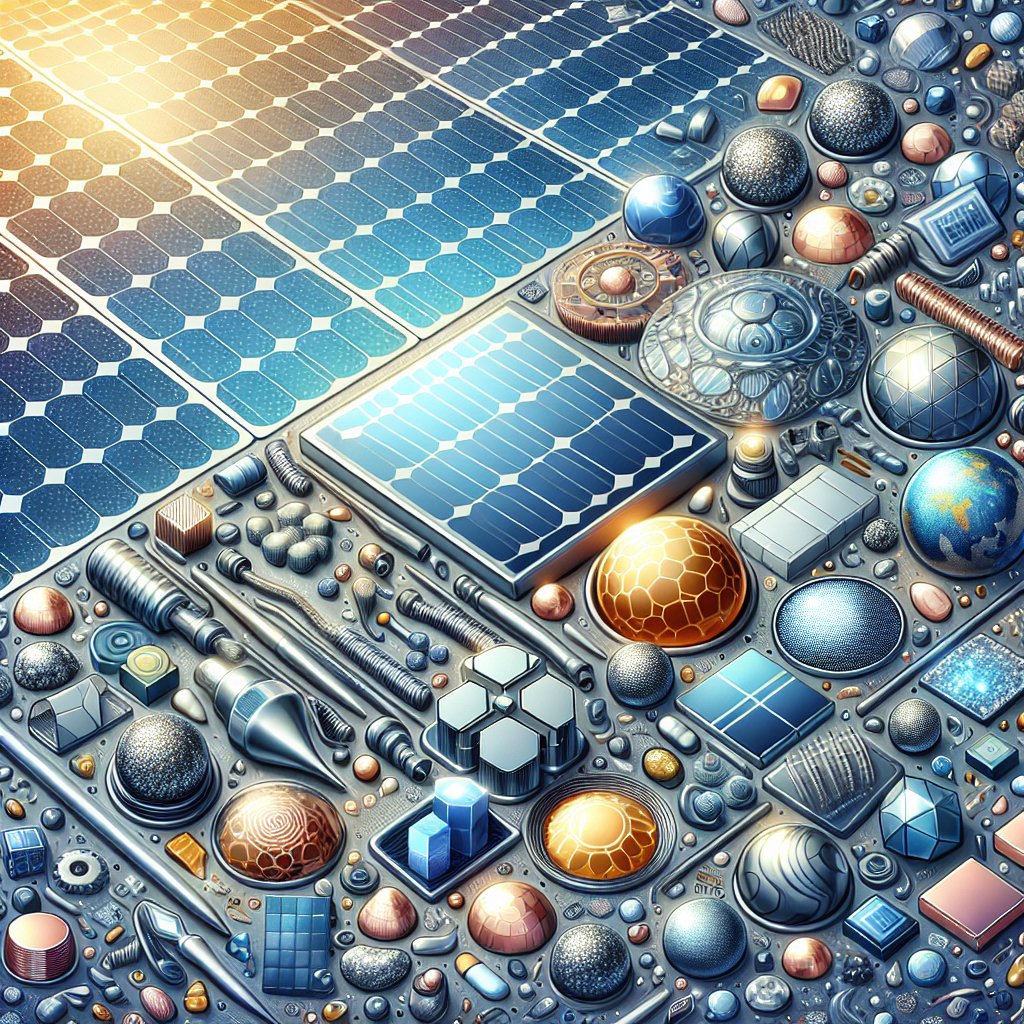Rare metals have become a cornerstone in the evolution of solar power technology, playing a crucial role in enhancing the efficiency and sustainability of solar energy systems. As the world increasingly shifts towards renewable energy sources, understanding the significance of these rare metals is essential for both technological advancement and environmental sustainability.
The Role of Rare Metals in Solar Power Technology
Rare metals, often referred to as rare earth elements, are a group of 17 chemically similar elements that are critical in the production of high-tech devices, including solar panels. These metals, such as indium, gallium, and tellurium, are integral to the photovoltaic cells that convert sunlight into electricity. Their unique properties, such as high electrical conductivity and the ability to absorb sunlight efficiently, make them indispensable in the manufacturing of thin-film solar cells.
Indium, for instance, is used in the form of indium tin oxide (ITO) as a transparent conductive layer in solar cells. This layer is crucial for allowing light to pass through while conducting electricity, thus improving the overall efficiency of the solar panels. Gallium, on the other hand, is used in copper indium gallium selenide (CIGS) solar cells, which are known for their high efficiency and flexibility. Tellurium is a key component in cadmium telluride (CdTe) solar cells, which are among the most cost-effective and efficient thin-film technologies available today.
The demand for these rare metals is expected to rise as the solar power industry continues to grow. This has led to increased research and development efforts aimed at finding alternative materials or improving the recycling processes for these metals to ensure a sustainable supply chain. The strategic importance of rare metals in solar technology cannot be overstated, as they are pivotal in the quest for cleaner and more efficient energy solutions.
Challenges in the Supply and Sustainability of Rare Metals
Despite their critical role in solar power technology, the supply of rare metals poses significant challenges. The extraction and processing of these metals are often concentrated in a few countries, leading to geopolitical and economic vulnerabilities. China, for example, is a major producer of rare earth elements, and any disruption in its supply chain can have global repercussions.
Moreover, the mining and refining processes for rare metals can have substantial environmental impacts. These processes often involve the use of toxic chemicals and generate significant waste, which can lead to soil and water contamination. As a result, there is a growing need for more sustainable mining practices and the development of technologies that minimize environmental damage.
Recycling is another critical aspect of ensuring the sustainability of rare metals. Currently, the recycling rates for these metals are relatively low, primarily due to the technical challenges and economic costs associated with the recovery processes. However, advancements in recycling technologies are being made, with a focus on improving the efficiency and cost-effectiveness of these processes. By enhancing recycling efforts, the solar industry can reduce its reliance on newly mined materials and mitigate the environmental impact of rare metal extraction.
In addition to recycling, research is being conducted to find alternative materials that can replace rare metals in solar technologies. These alternatives aim to maintain or even improve the efficiency of solar cells while reducing the dependency on scarce resources. Such innovations are crucial for the long-term sustainability of the solar power industry and the broader transition to renewable energy.
The Future of Solar Power Technology and Rare Metals
The future of solar power technology is closely intertwined with the availability and development of rare metals. As the demand for clean energy continues to rise, the solar industry is poised for significant growth, which will inevitably increase the demand for these critical materials. To address this challenge, a multi-faceted approach is required, involving advancements in technology, policy, and international cooperation.
Technological innovations will play a key role in shaping the future of solar power. Research into new materials and solar cell designs is ongoing, with the aim of improving efficiency and reducing costs. For instance, perovskite solar cells have emerged as a promising alternative to traditional silicon-based cells, offering high efficiency and the potential for lower production costs. While perovskites do not currently rely on rare metals, ongoing research is exploring ways to incorporate them to enhance performance further.
Policy measures are also essential in ensuring the sustainable development of rare metals. Governments and international organizations can implement regulations and incentives to promote responsible mining practices, support recycling initiatives, and encourage research into alternative materials. By fostering a collaborative approach, stakeholders can work towards a more sustainable and resilient solar power industry.
International cooperation is crucial in addressing the geopolitical challenges associated with the supply of rare metals. Countries can work together to diversify supply chains, share technological advancements, and establish strategic reserves to mitigate potential disruptions. Such collaboration can help ensure a stable and secure supply of rare metals, supporting the continued growth of solar power technology.
In conclusion, rare metals are indispensable to the evolution of solar power technology, offering unique properties that enhance the efficiency and sustainability of solar energy systems. However, the challenges associated with their supply and environmental impact necessitate a comprehensive approach to ensure their sustainable use. Through technological innovation, policy measures, and international cooperation, the solar industry can continue to thrive, contributing to a cleaner and more sustainable energy future.












